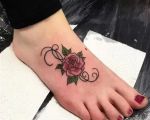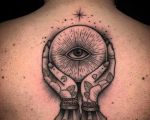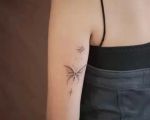The History of Tattooing: From Ancient Cultures to Modern-Day
Tattooing, a practice as old as humanity itself, has evolved drastically over the centuries. When I first became interested in tattoos, I was struck by how they’ve transformed from sacred, cultural symbols to mainstream forms of self-expression. It wasn’t always this way. In this article, I’m going to take you through the history of tattooing, exploring how this ancient art form developed from ancient cultures all the way to its place in modern society.
1. Tattooing in Ancient Cultures
The roots of tattooing trace back thousands of years. Archaeological evidence suggests that tattoos were used by ancient civilizations as a form of identity, protection, or spiritual significance. One of the most famous examples is the “Iceman” Ötzi, a mummy discovered in the Alps, dating back to around 3300 BCE. Ötzi’s body was covered in tattoos, many of which appear to have had medicinal purposes, aligning with acupuncture-like therapy.
In Ancient Egypt, tattoos were also found on mummies, particularly on women, who wore tattoos as a sign of beauty or protection. The Egyptians used tattoos for both decorative and magical purposes, believed to have protective powers. Meanwhile, the Polynesians, with their deep tattoo traditions, created intricate designs that told stories of genealogy, social status, and personal achievements.
Ancient tattooing was often a rite of passage or a symbol of status. For instance, in the Māori culture of New Zealand, the traditional practice of tā moko (tattooing) was used to mark one’s ancestry and achievements. These tattoos were not only personal but also marked one's place in the community and the world.
2. Tattoos in the Middle Ages and Beyond
As civilizations advanced, tattoos began to take on different meanings. During the Middle Ages, tattooing faded somewhat in Western Europe due to the rise of Christianity, which associated tattoos with pagan rituals and heresy. However, this didn’t stop tattooing from thriving in other parts of the world, particularly in Asia and the Pacific Islands. The Japanese, for example, perfected the art of irezumi, a full-body tattoo style that became a symbol of pride and rebellion in later centuries.
In the 16th century, tattooing experienced a resurgence, thanks to the European explorers who returned from voyages to the Pacific Islands. These explorers, like Captain Cook, were fascinated by the tattooed natives they encountered, and upon their return to Europe, they brought back stories of this exotic practice. As a result, tattooing became fashionable among the elite, though it was still largely considered a mark of the "other" in society.
3. The Industrial Revolution and the Birth of Modern Tattooing
The Industrial Revolution in the late 19th century was a pivotal moment for tattooing. In 1891, Samuel O’Reilly patented the first electric tattoo machine, forever changing the way tattoos were applied. Prior to this, tattooing was a tedious and often painful process done by hand using needles and ink. The electric machine made tattooing faster, more precise, and less painful, leading to a boom in the tattoo industry.
At this time, tattoos began to shift from being a mark of rebellion to a more mainstream art form. Sailors, who had previously tattooed themselves for protection and luck, began to ink tattoos with more personal significance. The designs they chose—anchors, ships, and swallows—became emblematic of their journeys and experiences. By the early 20th century, tattoos had spread to the lower classes and were no longer exclusively reserved for sailors or criminals.
4. The Rise of Tattoo Culture in the 20th Century
As the 20th century progressed, tattooing became increasingly popular among various subcultures. In the 1940s and 1950s, tattoos began to gain popularity with military men and celebrities. Movie stars like James Dean and Marlon Brando were seen with tattoos, making the art form more mainstream. Yet, tattoos were still often associated with rebellion, outlaw status, and nonconformity.
The 1960s and 1970s brought about the hippie movement, where tattoos became even more popular as a form of self-expression. During this time, tattoo artists started experimenting with colors and designs, pushing the boundaries of what was possible with tattoo art. It was during this era that tattoo shops began to appear in major cities across the United States, becoming integral parts of the urban landscape.
5. Modern-Day Tattooing: The Art Form Goes Mainstream
Fast forward to the present day, and tattooing is now one of the most popular forms of self-expression worldwide. No longer confined to sailors, rebels, or subcultures, tattoos have permeated all levels of society. Tattoos are now seen as works of art, with highly skilled artists creating intricate and personalized designs that reflect the individual’s story, beliefs, or passions.
With the advent of social media, tattoo culture has exploded in popularity. Instagram, in particular, has become a platform where tattoo artists showcase their work to a global audience. Many tattoo artists are now household names, with followers and fans who travel from all over the world to get inked by them. Tattoos have become a symbol of self-empowerment, individuality, and creativity.
Modern tattoo styles have also evolved, with new techniques and technologies constantly emerging. From geometric designs and watercolor tattoos to hyper-realistic portraits, tattoo artists today have an endless array of tools and styles at their disposal. The art form has evolved from simple marks to intricate pieces of art that can take hours, sometimes days, to complete.
6. Tattoos as a Cultural and Personal Statement
For me, the process of getting tattooed has always been a deeply personal one. Tattoos are not just about the design but also about the experience and the meaning behind it. Tattoos have become a way for people to tell their stories, mark important milestones in their lives, and even to heal from personal trauma. In many ways, tattoos are now viewed as a form of therapy and empowerment.
From the rituals of ancient tribes to the artistry of today’s tattoo parlors, the history of tattooing is rich, varied, and deeply rooted in human culture. Whether it’s a small, delicate design or a full-body masterpiece, tattoos continue to be a powerful form of self-expression, connecting us to our ancestors, our identities, and each other.








